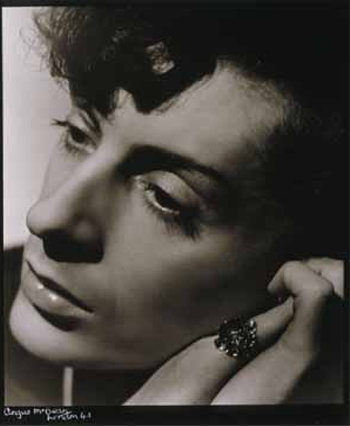Shortly after the photographer Angus McBean died, at the ripe age of eighty-six, his former lover and model Quentin Crisp published a tribute to him in The Times Saturday Review. McBean, wrote Crisp, had dedicated his life to a fragile illusion. “He played that life was happy; that all women were lovely – even Edith Evans; he played that love was everywhere. This philosophy made him delightful to be with, impossible to talk to and infinitely sad … He worked hard for his success, and when it came he enjoyed it chiefly because it brought him into contact with so many illustrious people. Unlike most of the men who work with the rich and famous he was genuinely star-struck. I never heard him speak badly of anyone well known. In his eyes, celebrity made anyone adorable. In spite of his success he remained mysteriously modest.”
“Angus McBean: Portraits”, at the National Portrait Gallery, bears out the truth of Crisp’s sly but affectionate epitaph. The exhibition amounts to only a partial survey of McBean’s prolific career, much of which he spent taking still photographs of theatrical productions – creating in the process an historically valuable archive which in 1970 he sold, in its entirety, to the Harvard Theatre Collection for the nugatory sum of £17,500, having failed to find a British institution willing to purchase it. Some such pictures have been included in the display at the NPG – including a couple of photographs of an impressively harrowed and lachrymose Vivien Leigh, in Lawrence Olivier’s 1949 production of Tennessee Williams’ A Streetcar Named Desire – but the others are all portraits of a more or less straightforward kind. Most are of the rich and famous, although many are of the distinctive, angular, extravagantly bearded McBean himself, notably a series of whimsical,...

Angus McBean: Portraits, at The National Portrait Gallery 2006
16-07-2006

